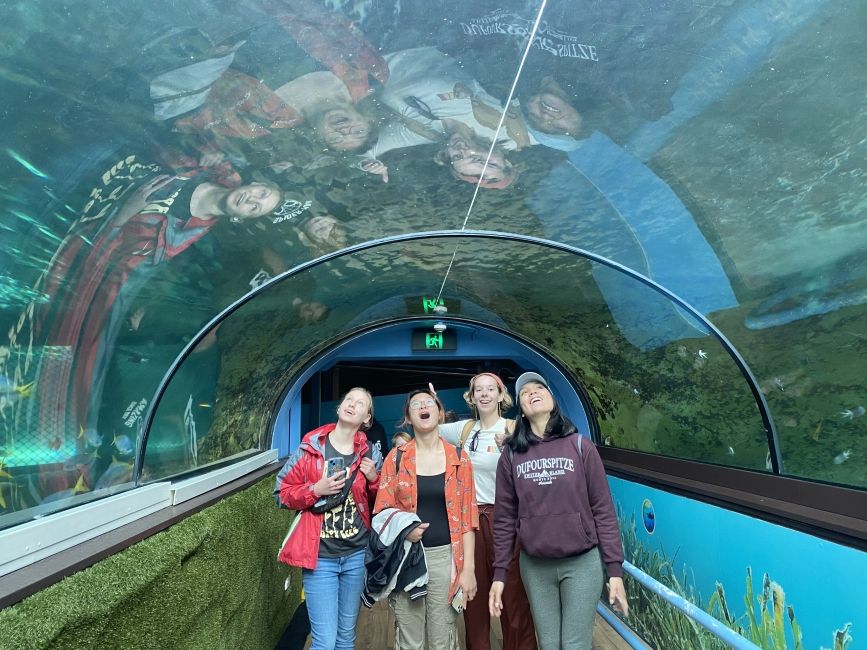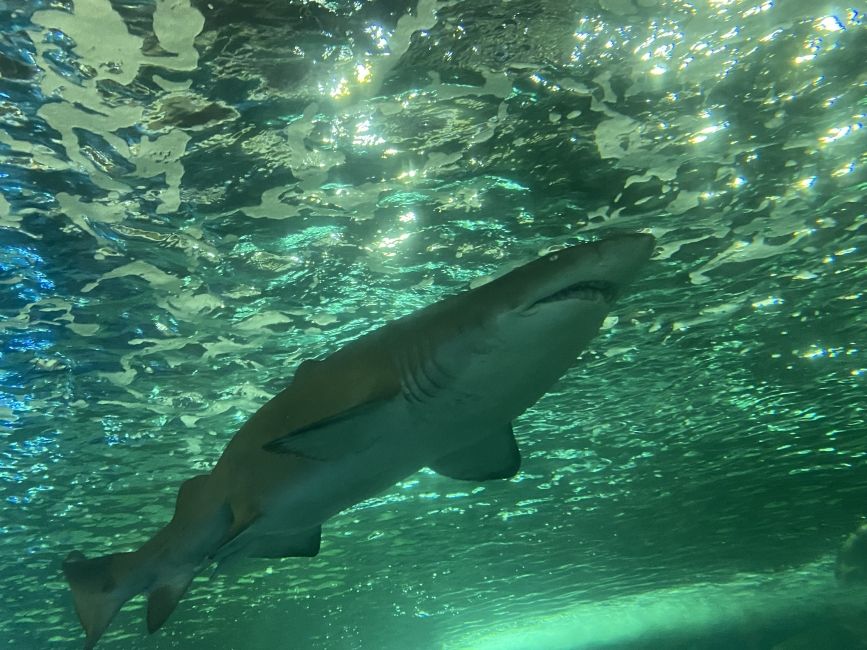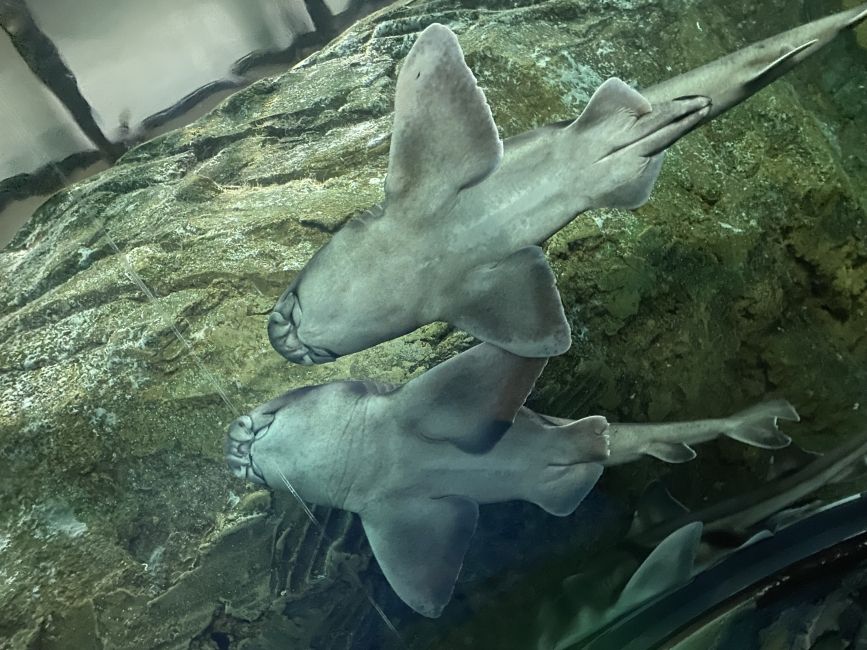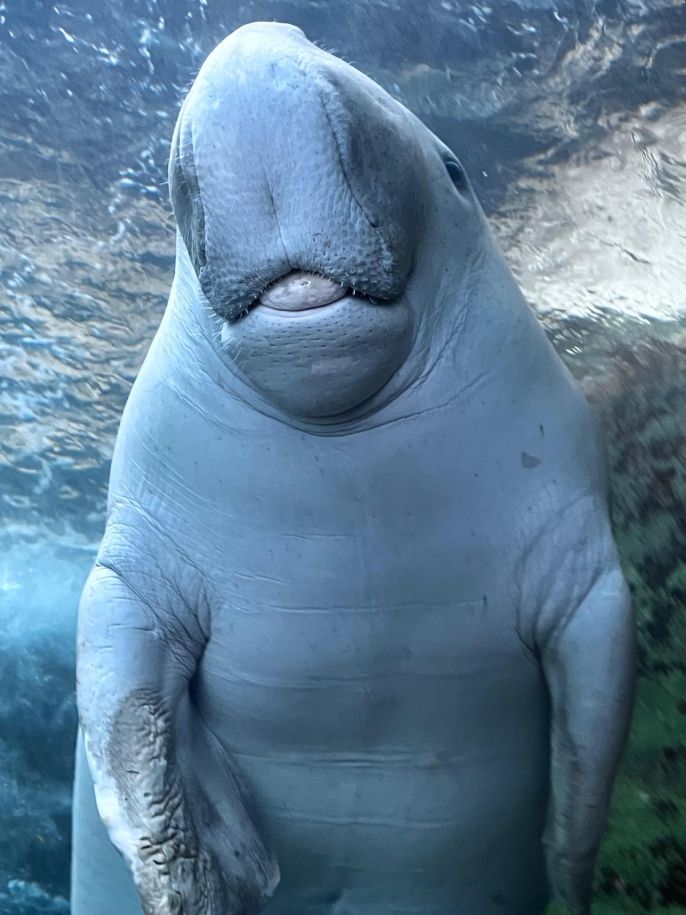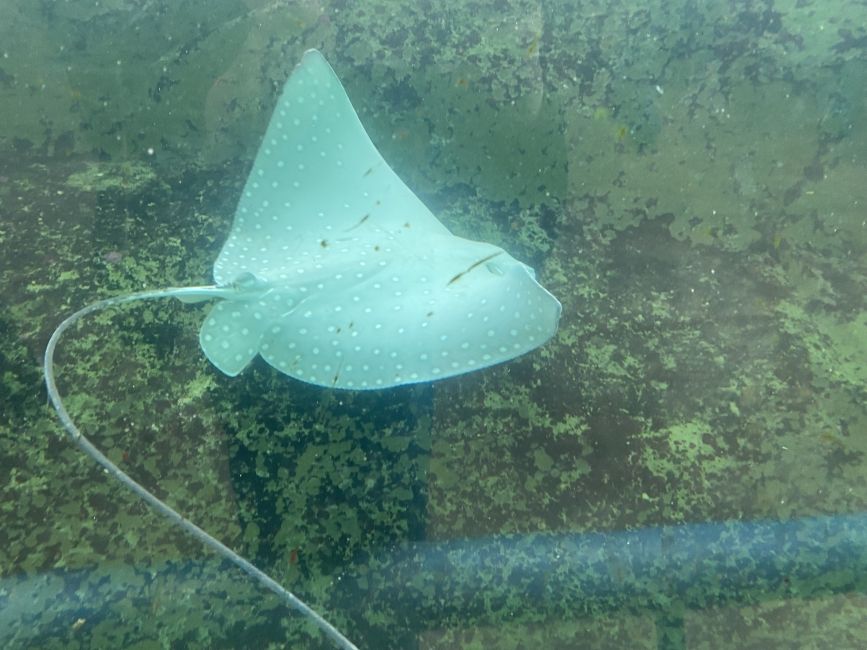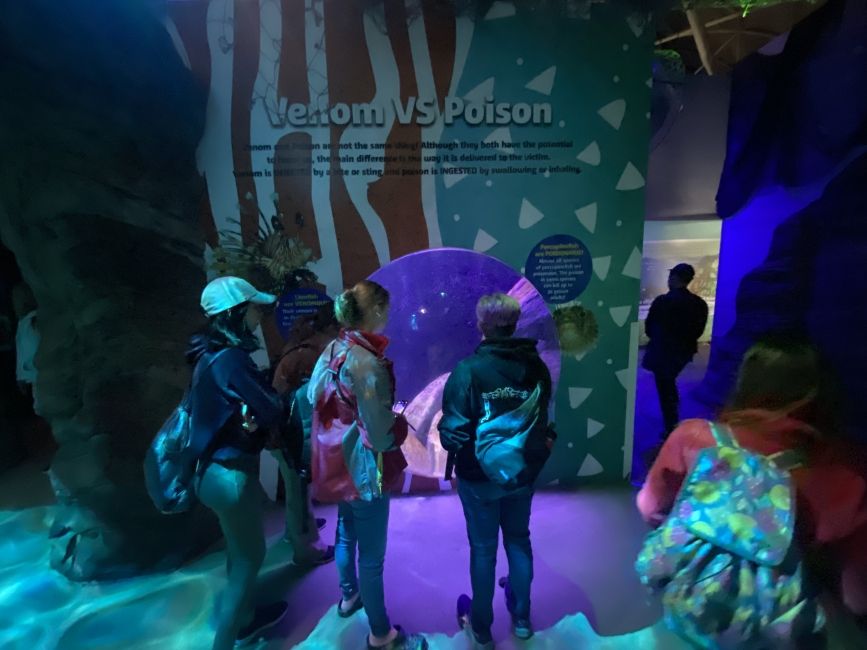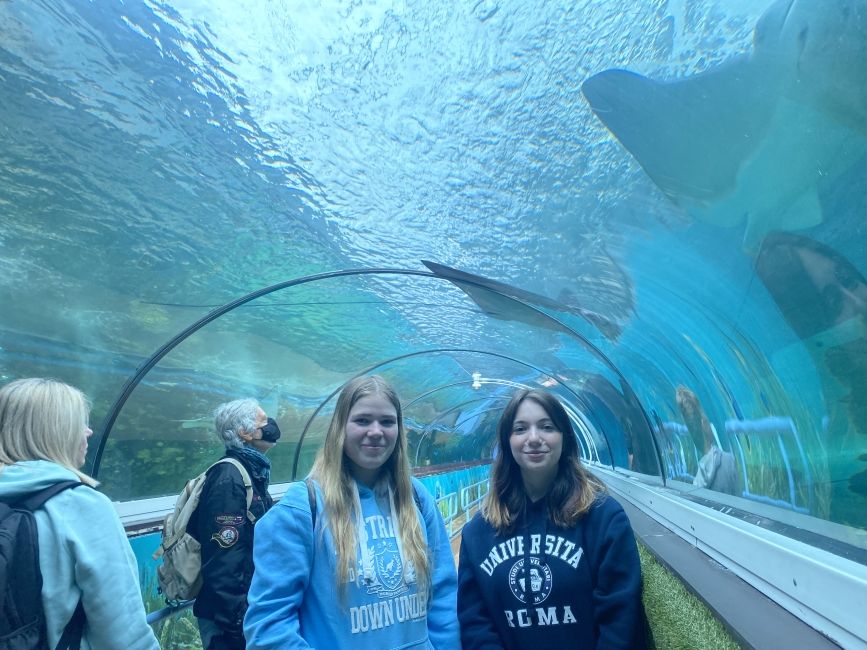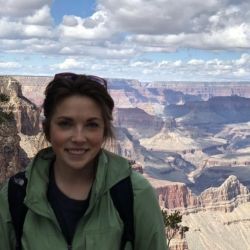Sydney Sealife Aquarium
"No water, no life. No blue, no green." This phrase, orginally spoken by Dr. Sylvia Earle, echoed in my brain as we first entered the SeaLife Sydney Aquarim this past Tuesday. The students studying in Sydney, Australia are learning about ocean and wildlife conservation. With climate change on the rise, its more important than ever before to protect our natural habitats and that includes the vast oceans.
The Sydney Aquarim was the perfect place for the students to learn about all the aquatic creatures that are located in Australia's waters. We entered the Aquarim and we are quickly greeted by numerous lights that resembled ocean waves. We made our way through the narrow passages exploring venomous vs poisonous pufferfish, starfish, sea urchins, dory, and nemo. However, the real experience occured when we entered the tanks that formed a dome over top of us. The students felt enchanted by the various sealife that swam around us. The most notable being the massive grey nurse sharks, the graceful white spotted eagle rays, and the show stopping dugong.
Some of you may be asking "what is a dugong?" Well my friends, a dugong is similar to the manatee. The dugong, also known as a sea cow, was rescued as a orphan calf and brought to Sealife Aquarim to be rehabilited into the wild. Pig, it's name, was released several times, but was found malnourished and injured. Ultimately, Pig was found unfit to live in the wild and now spends his days gracing vistors from all the world with his majestic beauty. This is a prime example of the efforts the aquarim is putting into rehabitating sealife into its natural enviroment.
When I spoke with students about what they would take away from this experience Avery (they/them), age 17, from North Carolina said "learning about Australia's conservation efforts to protect the grey nurse shark population and meeting Pig! One of two dugongs in human capitivity." Most students were in awe of the miraculous aquatic species they were able to witness. In fact, it brough tears to one students eyes, Nina (she/her) age 17, as this experience reminded her fondly of her pet fish at home.
Nonetheless, the students take away was clear, protect our oceans and all its creatures. Simple things like shopping wisely, buying less plastic, reducing pollution, conserving resources, and getting more involved in conservation efforts in your community are simple ways we can help our oceans. I will leave you all with this lasting sentiment. "The greatest danger to our planet is the belief that someone else will save it" spoken by Robert Swan.
Related Posts
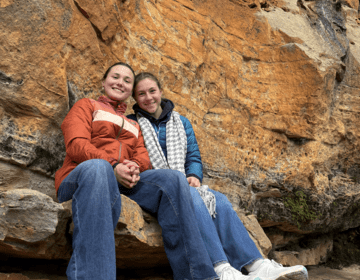
The Friendships You’ll Make While Studying Abroad in Sydney (And How to Keep Them)
Studying abroad isn’t just about the places you go; it’s about the people you share them with. Just ask Corbyn B., 16, and Pia L., 17, two students who spent... keep reading
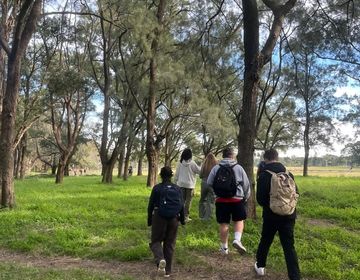
Week Three Excursions!
It's hard to believe HSSA 2 is in its final week in Australia, but what an incredible experience we have all had. This week started off with two fantastic days... keep reading
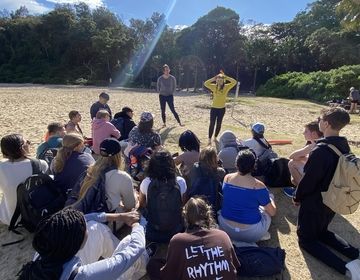
Exploring Australia's Aquatic Life & Experiencing the Beauty of Sydney's Renowned Beaches!
Home to over 600 marine animals, Sydney, Australia, is renowned for its beautiful bounty of beaches, rivers, bays, and harbors. Whether whale watching, snorkeling, sunbathing, or enjoying the sunrise and... keep reading
